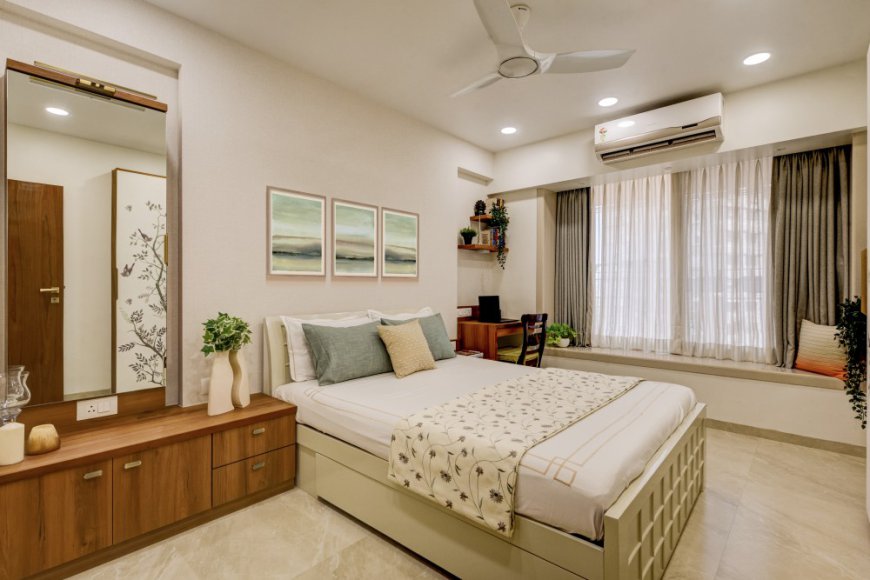Exploring Color and Texture: The Key to Stunning Hotel Textiles
In this article, we delve into the importance of color and texture in hotel textile collections, highlighting how they contribute to an inviting atmosphere while also considering the rise of sustainable hotel textiles.

In the hospitality industry, the impact of interior design on guest experience cannot be overstated. Among the most crucial elements are the textiles used throughout the space, which encompass everything from bed linens to upholstery and curtains. In this article, we delve into the importance of color and texture in hotel textile collections, highlighting how they contribute to an inviting atmosphere while also considering the rise of sustainable hotel textiles.
The Role of Color in Hotel Textiles
Setting the Mood
Color plays a vital role in creating the ambiance of a hotel. Warm hues like reds and oranges evoke a sense of comfort and warmth, making spaces feel cozy. In contrast, cooler tones such as blues and greens can create a tranquil and refreshing environment, ideal for a relaxing stay. For instance, a hotel aiming for a calming atmosphere may opt for soft, muted colors in its textile collections, while a vibrant urban hotel might use bold, bright colors to energize the space.
Color Coordination
When curating hotel textile collections, it's essential to consider how various colors work together. A well-coordinated palette can enhance the overall aesthetic of a room. For example, combining neutral tones with a pop of color through accent pillows or throws can create a visually appealing focal point. Additionally, seasonal changes can inspire color shifts in hotel textiles, allowing properties to refresh their look without a complete overhaul.
The Importance of Texture in Hotel Textiles
Enhancing Comfort
Texture adds depth and dimension to hotel textiles, influencing the tactile experience of guests. Soft, plush fabrics like velvet or chenille can create a sense of luxury, while natural fibers like cotton and linen offer breathability and comfort. Incorporating a variety of textures—from smooth sheets to textured throws—can elevate a guest's experience and encourage relaxation. For instance, a luxurious hotel might use silk bed linens paired with a chunky knit throw to create an inviting and opulent bed setup.
Visual Interest
Textures also contribute to the visual interest of a space. Layering different materials can transform a plain room into a dynamic and engaging environment. For instance, mixing patterned upholstery with solid curtains and textured cushions can create a harmonious yet intriguing look. Designers often experiment with various fabrics, like combining the crispness of linen with the softness of velvet, to achieve a balanced and appealing design.
The Rise of Sustainable Hotel Textiles
Eco-Friendly Materials
As sustainability becomes a priority in the hospitality sector, sustainable hotel textiles are gaining traction. Hotels are increasingly opting for eco-friendly materials such as organic cotton, bamboo, and recycled polyester. These materials not only reduce environmental impact but also resonate with eco-conscious travelers. By incorporating sustainable textiles into their collections, hotels can attract guests who value environmentally responsible practices.
Responsible Sourcing and Production
In addition to the materials used, the production process of hotel textiles is crucial for sustainability. Many hotels are now partnering with manufacturers that prioritize ethical sourcing and fair labor practices. This commitment to social responsibility enhances a hotel's brand reputation and appeals to a growing market of conscious consumers.
Circular Economy Practices
The concept of a circular economy is also influencing hotel textile collections. This approach encourages the reuse, recycling, and upcycling of textiles, minimizing waste. Hotels can implement programs that allow guests to contribute to sustainability efforts, such as offering discounts for returning used linens or opting for textiles that are designed for longevity and easy recycling.
Conclusion
In conclusion, the careful consideration of color and texture in hotel textile collections plays a crucial role in enhancing the overall guest experience. By creating inviting atmospheres through thoughtful color choices and diverse textures, hotels can foster a memorable environment for their guests. Moreover, the shift towards sustainable hotel textiles ensures that this aesthetic appeal does not come at the expense of the planet. As the hospitality industry continues to evolve, the integration of style and sustainability will be key in attracting discerning travelers seeking both luxury and responsibility in their accommodations.
Whether you’re a hotelier looking to revamp your space or a design enthusiast interested in the latest trends, understanding the interplay of color and texture in textiles is essential for creating stunning and inviting environments.
